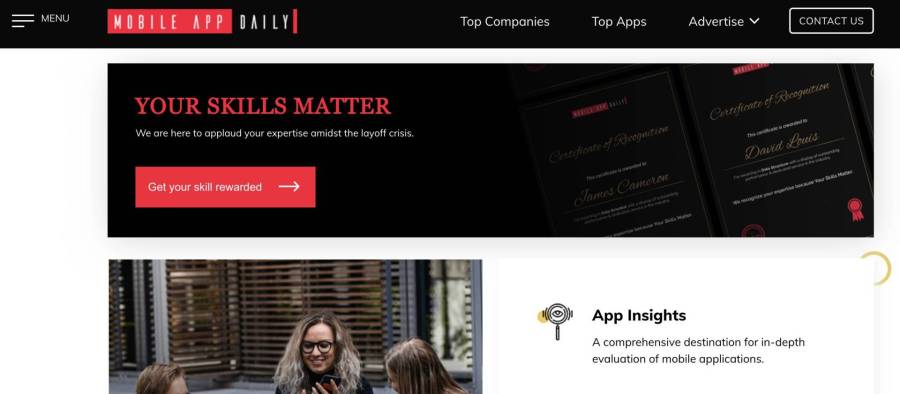Politics
Top 14 Sites to Promote Your Startup
Published
12 months agoon
By
Drew Simpson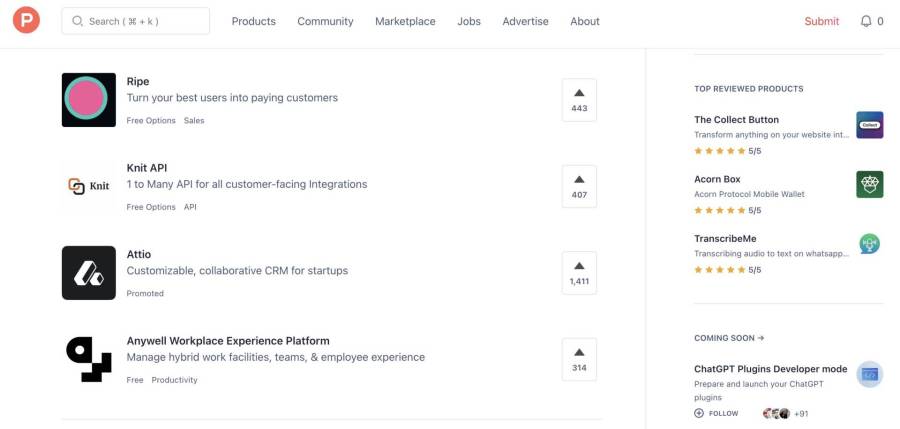
There are a ton of different ways to promote your app or software. You can run ads, post on social media, or even go old-school and hand out flyers.
But one of the most effective (and affordable) ways to promote your app is through online directories and review sites.
Not only do these sites help you reach a wider audience, but they help people find your app more easily. Getting on a relevant website can have pages that feature and show off your awesome business.
Best of all, many of these directories and review sites are completely free to list on:
#1: Product Hunt
Product Hunt surfaces the best new products every day. It’s a place for product-loving enthusiasts to share and geek out about the latest mobile apps, websites, hardware projects, and tech creations.
Why it’s great:
Product Hunt is a great way to promote your mobile app or software. It’s a website where you can submit your product for review by other users. The best part is that you can get feedback and suggestions from other users, which can help you improve your product. It might even be the second most visited place for app purchases in the app store. Some of the newest software startups first launch on ProductHunt before anywhere else.
- Rating for an app: 10/10
- Rating for software: 10/10
- Rating for technology other than app or software: 8/10
#2: KillerStartups
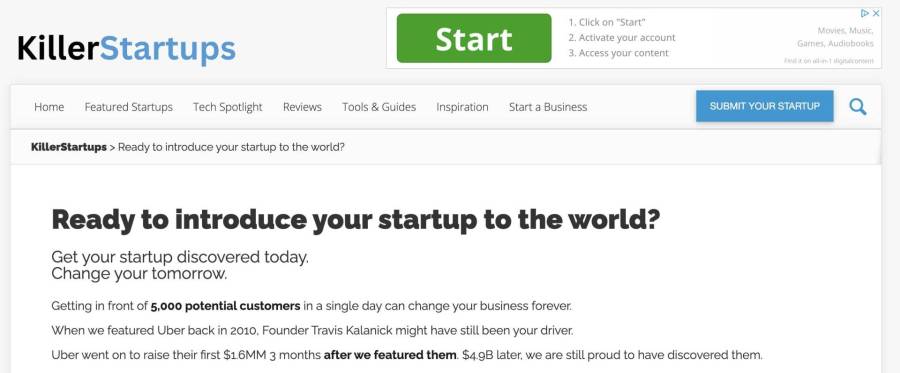
KillerStartups aims to help them both by reviewing up-and-coming internet startups right on the spot, right at their birth. It doesn’t take a lot to realize that around the world, young entrepreneurs have started talking compulsively about creating “the next big thing.” In New York, San Francisco, and the world over, investors are having lunches just talking about it.
Why it’s great:
Their blog is updated frequently with fresh content that will help keep people coming to the site for years to come. KillerStartups has a strong editorial voice that helps to elevate the quality of the content on their site. The team also adds your logo to every post to help make sure your branding is consistent and shown. Most of all, they have a strong community of followers who are hungry for new information about apps, software, and new startups.
- Rating for an app: 8/10
- Rating for software: 10/10
- Rating for technology other than app or software: 7/10
#3: Launching Next
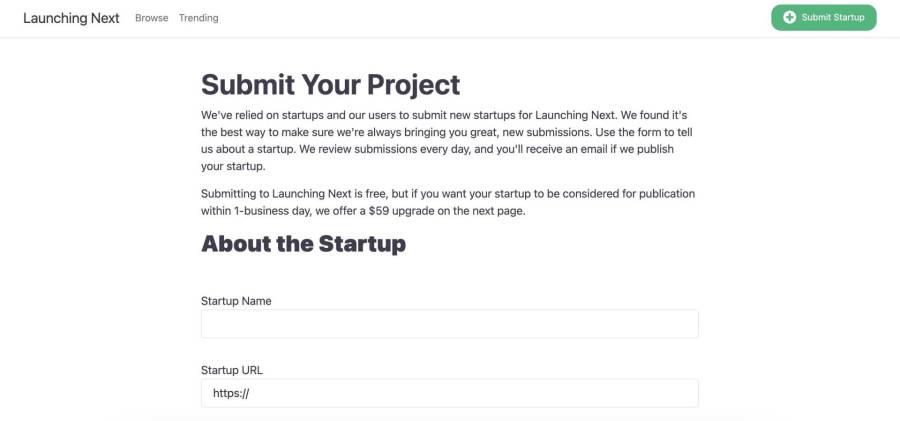
LaunchingNext is home to over 25,000 tech startups, side projects, and great business ideas. The sites showcases new startups to our thousands of readers—however, a feature costs around $59.
Why it’s great:
There are a few reasons why Launching Next is a great website for your app or software blog. First, it allows you to show off your latest and greatest work. Second, it allows you to reach out to new potential customers. And finally, it can help you build brand awareness and attract new followers. So if you’re looking to increase your startup’s popularity and reach, Launching Next is a great way to go!
- Rating for an app: 6/10
- Rating for software: 9/10
- Rating for technology other than app or software: 5/10
#4: NewsReports

NewsReports began as a humble website dedicated to sifting through the (literally) millions of apps currently available in the Apple Store or on Google Play, doing their best to steer readership to substance over hype. It may or may not be the website you landed on right now!
Why it’s great:
If you’re looking for a place to promote your app or software, NewsReports is a great website option. This blog is dedicated to reporting on the latest news in the tech world, and it’s packed with information that can help you promote your product. Plus, NewsReports always has interesting stories that will keep you entertained. So whether you’re looking for something new to read or want to learn about the latest trends in tech, NewsReports is a great choice. The website also has a growing presence of influencers in other content sections, such as life and health, giving you great potential reach beyond regular tech users.
- Rating for an app: 10/10
- Rating for software: 9/10
- Rating for technology other than app or software: 9/10
#5: SpringWise

Springwise is the leading global innovation intelligence platform for positive and sustainable change. For the last 20 years, the site has been uncovering and curating the most innovative thinking and ideas on the planet. With a library of more than 11,000 global innovations, Springwise is trusted by thousands of thought leaders, entrepreneurs, investors, educators, and tech disruptors as the leading source of inspirational ideas that matter.
Why it’s great:
Springwise is a great website to promote your app or software. They have a huge following of app and software developers, so you’ll surely get some great exposure. They have a really active community, so you can easily connect with other bloggers and share your content with them. They also have some great features, like their “feature of the day” section highlighting the latest and greatest apps and software releases from across the web.
- Rating for an app: 6/10
- Rating for software: 6/10
- Rating for technology other than app or software: 10/10
#6: The Startup Pitch
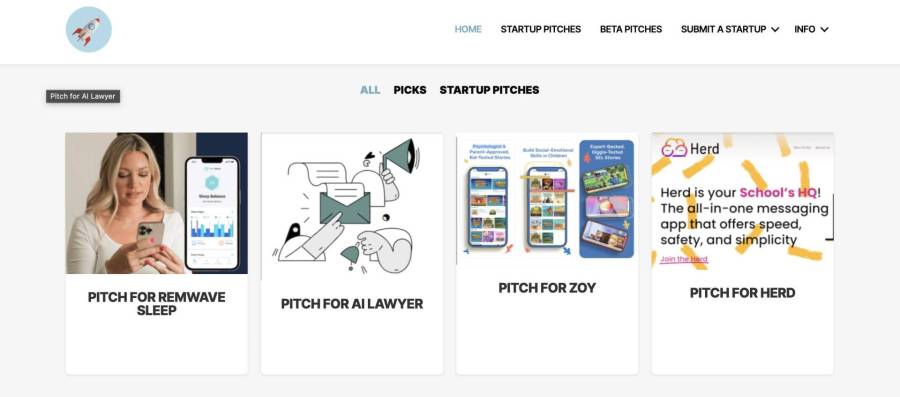
The Startup Pitch is a site that was born out of an experiment in user-generated news called D.I.Y. Startup News. With D.I.Y. Startup News, the creators wanted to create a site where people could go and post startup-related stories without having to have a blog or get more coverage for their up-and-coming blog or startup.
Why it’s great:
The Startup Pitch is great for promoting your mobile app or software. It gives you a chance to talk about what makes your product unique. The website can also help you build your own brand and visibility within the technology community. So if you’re looking to improve your chances of success in tech, then start pitching your ideas on The Startup Pitch.
- Rating for an app: 7/10
- Rating for software: 9/10
- Rating for technology other than app or software: 5/10
#7: Reddit
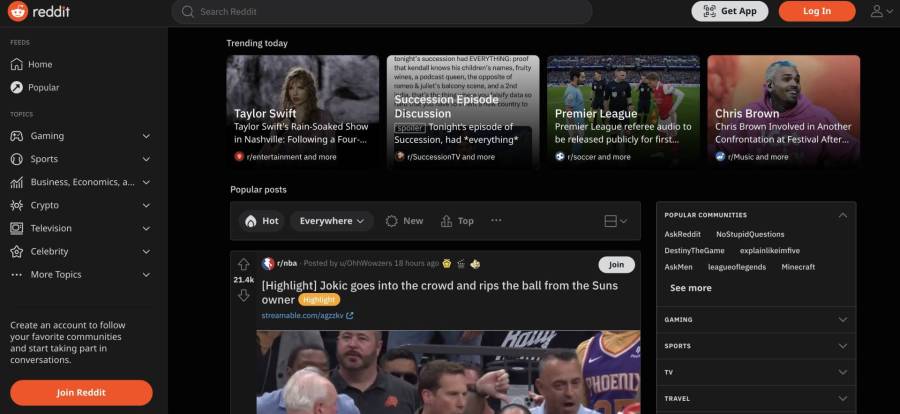
Reddit is home to thousands of communities, endless conversation, and authentic human connection. Whether you’re into breaking news, sports, TV fan theories, or a never-ending stream of the internet’s cutest animals, there’s a community on Reddit for your startup or mobile app.
Why it’s great:
The website is a community of millions of people who are actively interested in what you have to offer. Plus, Reddit has a well-defined structure that makes promoting your products easy. Reddit users are very active and engaged on the site. The users will constantly be looking for new content to read and will share it with their friends, which can help promote your mobile app or software far and wide.
- Rating for an app: 8/10
- Rating for software: 8/10
- Rating for technology other than app or software: 7/10
#8: Under30CEO
Under30CEO is the leading media site covering news, advice, trends & events for young entrepreneurs. Since its founding in 2008, the site has been committed to inspiring, educating, and featuring the doers of the world. Their mission is to help every young entrepreneur build their business, fulfill their dreams, and excel in their career.
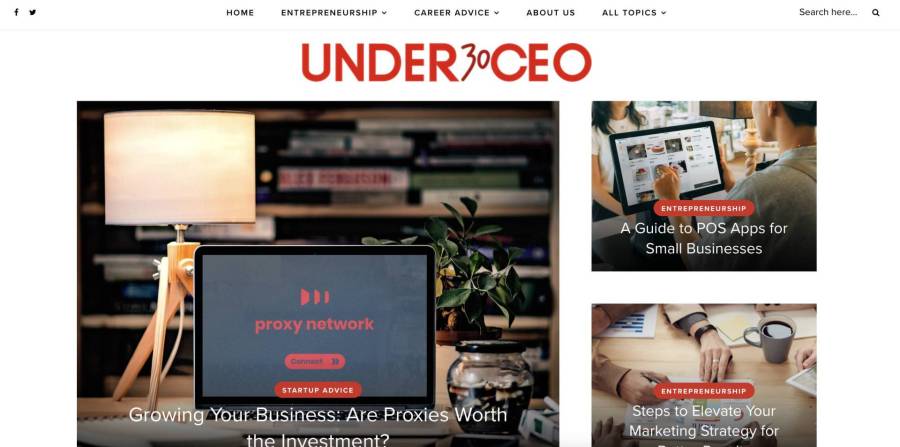
Why it’s great:
Under30CEO is a great site for promoting your app or software. The media group has a website and social media channels that are dedicated to helping Under30 CEOs and entrepreneurs. It also has an active and engaged community of young professionals. Best of all. the site offers many resources, tips, and advice on everything from business planning to marketing your product. With a relatively easy submission, Under30CEO is a must as far as promoting your app or software goes.
- Rating for an app: 7/10
- Rating for software: 7/10
- Rating for technology other than app or software: 10/10
#9: Facebook Page and Community
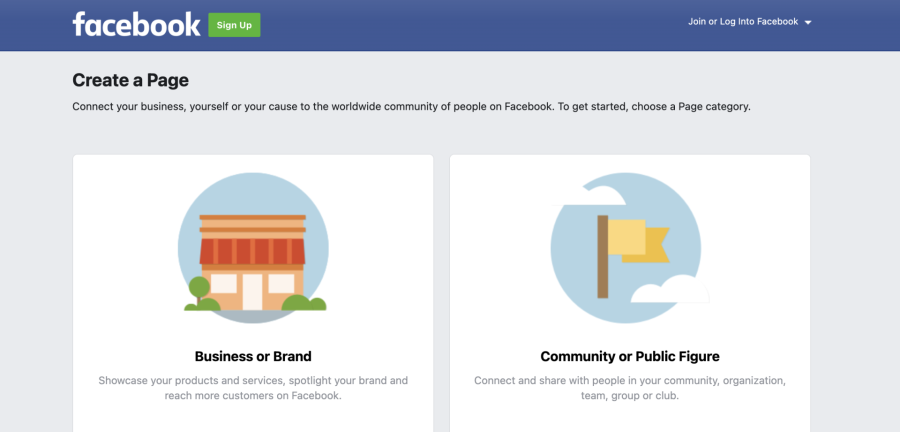
A Facebook Page is where customers go to discover and engage with your business. Setting up a Page is simple and free, and it looks great on both desktop and mobile so that you can meet customers on any device.
It has over 2 billion active users who are likely to share your content if it is interesting and useful. Plus, Facebook has built up a huge community of experts and enthusiasts who can help you promote your content even further. Facebook is a go-to for many marketers because of its massive audience already. Facebook Groups can focus you on specific customers, and help you be known by influencers who already took the stage for the press. Join some groups, and include a link back to your landing page.
- Rating for an app: 7/10
- Rating for software: 7/10
- Rating for technology other than app or software: 9/10
#10: BetaList
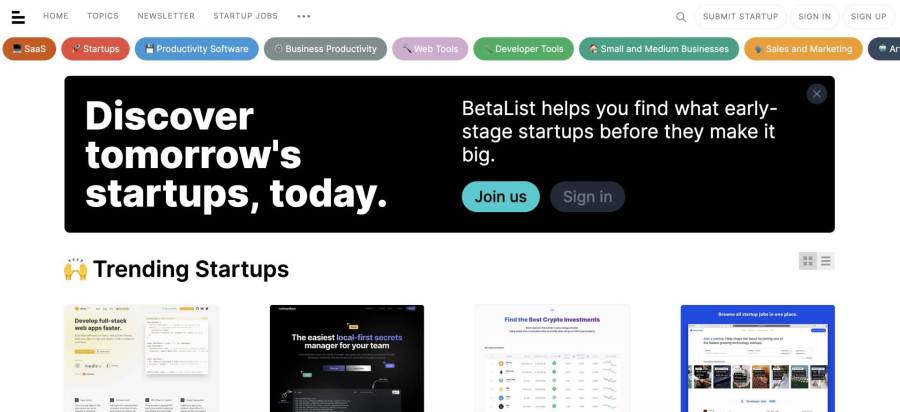
BetaList is the place for early adopters to discover upcoming and recently launched internet startups, and for startup founders to share their startups with the world and get early user feedback.
Why it’s great:
Betalist is one of the best sites to promote your app or software. It has many features, including tools to find reviews, create posts, and even track engagement. Plus, it’s easy to use and has a user-friendly interface. The website traffic is high on any post, making it a great spot to launch any type of online product or service.
- Rating for an app: 9/10
- Rating for software: 10/10
- Rating for technology other than app or software: 6/10
#11: DevX
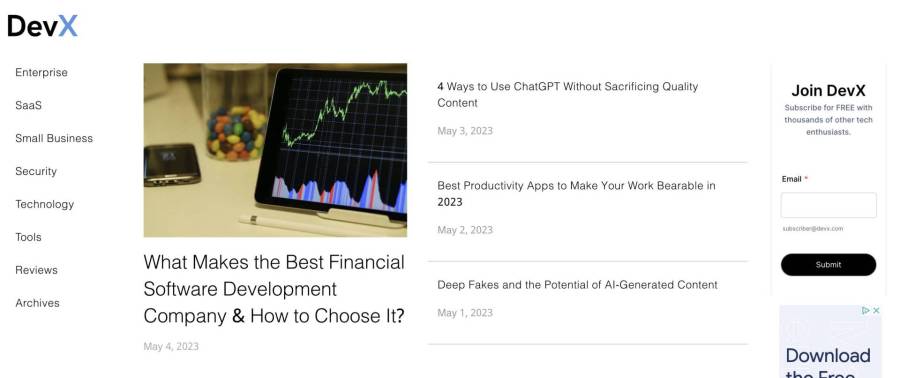
DevX is the leading provider of technical information, tools, and services for IT professionals developing corporate applications. The publication provides a 360-degree view of Enterprise Application Development and the latest news and forums. Since the boom of SaaS and inclusive technology tools, DevX has expanded its publication topics to include content on small business technology and easy-use tech applications.
Why it’s great:
DevX is a great place to promote your app or software website. They have a wide variety of tools and resources to help you get started, and they regularly update their site with new content. Plus, they’re always looking for new contributors, so if you have an opinion on app development or software marketing, DevX would be a great place to share it! Maybe, while marketing, you can become a relevant voice as a tech influencer.
- Rating for an app: 7/10
- Rating for software: 11/10
- Rating for technology other than app or software: 6/10
#12: MobileAppDaily
MobileAppDaily only brings the most recent and relevant tech news for its readers, introducing the finest products and websites and helping you decide which product/app you should opt for.
Why it’s great:
Mobile App Daily is a smart place to promote. The website provides a daily list of new and popular apps, as well as tips on how to get more downloads and ratings. The site also offers a blog and forum for users to discuss apps. This is the perfect target audience for an app. Make your app promotion easy with Mobile App Daily. The website was made for mobile app marketing, so use it!
- Rating for an app: 10/10
- Rating for software: 4/10
- Rating for technology other than app or software: 4/10
#13: Netted

Netted is a weekly email from the team at The Webby Awards featuring the best apps, products, and services that make your life better. Hence, their editorial mission: Better living through the Internet.
Why it’s great:
Netted offers users access to a large audience of potential customers and investors. One of the biggest reasons to promote on the site is its connection with the Webby Awards. These awards are a potential way to get featured in a distinguished list of new products and services.
- Rating for an app: 6/10
- Rating for software: 6/10
- Rating for technology other than app or software: 9/10
#14: VentureBeat Profiles

VentureBeat is proud to be the leading media authority in artificial intelligence and machine learning. The site is obsessed with covering transformative technology to help business leaders make smarter decisions. VB is uniquely positioned to help companies reach today’s top tech leaders and business executives for maximum impact.
Why it’s great:
VentureBeat is packed with helpful content and features top-notch editorial coverage of the latest tech news and trends. The traffic is one of the best out of the technology websites. Plus, the team there is passionate about helping startups succeed, so you can be sure they’ll give your app or product the attention it deserves. You can sign up for its newsletter, write guest posts, or participate in its competitions. Whether you’re a beginner or an experienced tech entrepreneur VentureBeat is a valuable resource.
- Rating for an app: 9/10
- Rating for software: 9/10
- Rating for technology other than app or software: 9/10
Time to Launch! Conclusion
Guest blogging can send all kinds of people to your landing page or app. Mobile app marketing is easy when using promotion apps, websites, and pages like the ones above—no need for app store optimization when you have this many ways to promote your app or software. Find what website fits your audience the best, and see what some promotions can do.
Getting press can be fun! It is about showing off your awesome creations. Take advantage of what channels are already built for you as a marketer. Visitors can come from relevant links all across the internet. Without further time wasted — go launch your app and software and pitch it to the internet! Users perhaps could be waiting for your innovative app.
There are many ways to promote your app or software, but not all of them are free. The sites listed above are some of the best free ways to promote your app or software. With a little bit of effort, you can get your app or software in front of a large audience and increase your chances of success.
Inner Images Credit: Taken from the
Brad Anderson
Editor In Chief at ReadWrite
Brad is the editor overseeing contributed content at ReadWrite.com. He previously worked as an editor at PayPal and Crunchbase. You can reach him at brad at readwrite.com.
You may like
-


The Download: how to fight pandemics, and a top scientist turned-advisor
-


The Download: OpenAI’s top scientist on AGI, and gene therapy to restore hearing
-


This startup wants to find out if humans can have babies in space
-


Top Strategies of Lead Generation for Technology Companies
-


Indian Cyber Force Targeting Canadian Sites, and Other Cybercrimes
-


Top of Heart: New Book Reveals the Mindset Creating 7-Figure Businesses
Politics
Fintech Kennek raises $12.5M seed round to digitize lending
Published
7 months agoon
10/11/2023By
Drew Simpson
London-based fintech startup Kennek has raised $12.5 million in seed funding to expand its lending operating system.
According to an Oct. 10 tech.eu report, the round was led by HV Capital and included participation from Dutch Founders Fund, AlbionVC, FFVC, Plug & Play Ventures, and Syndicate One. Kennek offers software-as-a-service tools to help non-bank lenders streamline their operations using open banking, open finance, and payments.
The platform aims to automate time-consuming manual tasks and consolidate fragmented data to simplify lending. Xavier De Pauw, founder of Kennek said:
“Until kennek, lenders had to devote countless hours to menial operational tasks and deal with jumbled and hard-coded data – which makes every other part of lending a headache. As former lenders ourselves, we lived and breathed these frustrations, and built kennek to make them a thing of the past.”
The company said the latest funding round was oversubscribed and closed quickly despite the challenging fundraising environment. The new capital will be used to expand Kennek’s engineering team and strengthen its market position in the UK while exploring expansion into other European markets. Barbod Namini, Partner at lead investor HV Capital, commented on the investment:
“Kennek has developed an ambitious and genuinely unique proposition which we think can be the foundation of the entire alternative lending space. […] It is a complicated market and a solution that brings together all information and stakeholders onto a single platform is highly compelling for both lenders & the ecosystem as a whole.”
The fintech lending space has grown rapidly in recent years, but many lenders still rely on legacy systems and manual processes that limit efficiency and scalability. Kennek aims to leverage open banking and data integration to provide lenders with a more streamlined, automated lending experience.
The seed funding will allow the London-based startup to continue developing its platform and expanding its team to meet demand from non-bank lenders looking to digitize operations. Kennek’s focus on the UK and Europe also comes amid rising adoption of open banking and open finance in the regions.
Featured Image Credit: Photo from Kennek.io; Thank you!
Radek Zielinski
Radek Zielinski is an experienced technology and financial journalist with a passion for cybersecurity and futurology.
Politics
Fortune 500’s race for generative AI breakthroughs
Published
7 months agoon
10/11/2023By
Drew Simpson
As excitement around generative AI grows, Fortune 500 companies, including Goldman Sachs, are carefully examining the possible applications of this technology. A recent survey of U.S. executives indicated that 60% believe generative AI will substantially impact their businesses in the long term. However, they anticipate a one to two-year timeframe before implementing their initial solutions. This optimism stems from the potential of generative AI to revolutionize various aspects of businesses, from enhancing customer experiences to optimizing internal processes. In the short term, companies will likely focus on pilot projects and experimentation, gradually integrating generative AI into their operations as they witness its positive influence on efficiency and profitability.
Goldman Sachs’ Cautious Approach to Implementing Generative AI
In a recent interview, Goldman Sachs CIO Marco Argenti revealed that the firm has not yet implemented any generative AI use cases. Instead, the company focuses on experimentation and setting high standards before adopting the technology. Argenti recognized the desire for outcomes in areas like developer and operational efficiency but emphasized ensuring precision before putting experimental AI use cases into production.
According to Argenti, striking the right balance between driving innovation and maintaining accuracy is crucial for successfully integrating generative AI within the firm. Goldman Sachs intends to continue exploring this emerging technology’s potential benefits and applications while diligently assessing risks to ensure it meets the company’s stringent quality standards.
One possible application for Goldman Sachs is in software development, where the company has observed a 20-40% productivity increase during its trials. The goal is for 1,000 developers to utilize generative AI tools by year’s end. However, Argenti emphasized that a well-defined expectation of return on investment is necessary before fully integrating generative AI into production.
To achieve this, the company plans to implement a systematic and strategic approach to adopting generative AI, ensuring that it complements and enhances the skills of its developers. Additionally, Goldman Sachs intends to evaluate the long-term impact of generative AI on their software development processes and the overall quality of the applications being developed.
Goldman Sachs’ approach to AI implementation goes beyond merely executing models. The firm has created a platform encompassing technical, legal, and compliance assessments to filter out improper content and keep track of all interactions. This comprehensive system ensures seamless integration of artificial intelligence in operations while adhering to regulatory standards and maintaining client confidentiality. Moreover, the platform continuously improves and adapts its algorithms, allowing Goldman Sachs to stay at the forefront of technology and offer its clients the most efficient and secure services.
Featured Image Credit: Photo by Google DeepMind; Pexels; Thank you!
Deanna Ritchie
Managing Editor at ReadWrite
Deanna is the Managing Editor at ReadWrite. Previously she worked as the Editor in Chief for Startup Grind and has over 20+ years of experience in content management and content development.
Politics
UK seizes web3 opportunity simplifying crypto regulations
Published
7 months agoon
10/10/2023By
Drew Simpson
As Web3 companies increasingly consider leaving the United States due to regulatory ambiguity, the United Kingdom must simplify its cryptocurrency regulations to attract these businesses. The conservative think tank Policy Exchange recently released a report detailing ten suggestions for improving Web3 regulation in the country. Among the recommendations are reducing liability for token holders in decentralized autonomous organizations (DAOs) and encouraging the Financial Conduct Authority (FCA) to adopt alternative Know Your Customer (KYC) methodologies, such as digital identities and blockchain analytics tools. These suggestions aim to position the UK as a hub for Web3 innovation and attract blockchain-based businesses looking for a more conducive regulatory environment.
Streamlining Cryptocurrency Regulations for Innovation
To make it easier for emerging Web3 companies to navigate existing legal frameworks and contribute to the UK’s digital economy growth, the government must streamline cryptocurrency regulations and adopt forward-looking approaches. By making the regulatory landscape clear and straightforward, the UK can create an environment that fosters innovation, growth, and competitiveness in the global fintech industry.
The Policy Exchange report also recommends not weakening self-hosted wallets or treating proof-of-stake (PoS) services as financial services. This approach aims to protect the fundamental principles of decentralization and user autonomy while strongly emphasizing security and regulatory compliance. By doing so, the UK can nurture an environment that encourages innovation and the continued growth of blockchain technology.
Despite recent strict measures by UK authorities, such as His Majesty’s Treasury and the FCA, toward the digital assets sector, the proposed changes in the Policy Exchange report strive to make the UK a more attractive location for Web3 enterprises. By adopting these suggestions, the UK can demonstrate its commitment to fostering innovation in the rapidly evolving blockchain and cryptocurrency industries while ensuring a robust and transparent regulatory environment.
The ongoing uncertainty surrounding cryptocurrency regulations in various countries has prompted Web3 companies to explore alternative jurisdictions with more precise legal frameworks. As the United States grapples with regulatory ambiguity, the United Kingdom can position itself as a hub for Web3 innovation by simplifying and streamlining its cryptocurrency regulations.
Featured Image Credit: Photo by Jonathan Borba; Pexels; Thank you!
Deanna Ritchie
Managing Editor at ReadWrite
Deanna is the Managing Editor at ReadWrite. Previously she worked as the Editor in Chief for Startup Grind and has over 20+ years of experience in content management and content development.

